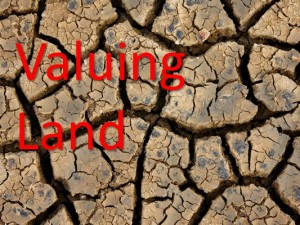Having taken off the past two weeks from blogging to prepare for a big Court Case involving marina land, I’ve some observations I’d like to share. With the exception of certain select areas of the country (Florida in particular), there is a very large disconnect between marina owners, tax assessors and appraisers when it comes to perceptions of marina land. By marina land, I’m not referring to the land that is necessary to support the improvements – I’m referring to what’s termed surplus or excess land (which I will define and explore as part of this blog series). It seems that a good percentage of marinas in almost every submarket have it.
 We all know the perception that waterfront land is extremely valuable. Unfortunately, perception frequently does not mirror reality. Many assessors believe that excess/surplus marina land is worth a royal fortune, citing that it can be developed into multiple waterfront lots or perhaps entire waterfront subdivisions. Too many of them use buildable lots as part of their valuation process, which can be correct if the marina land can be developed.
We all know the perception that waterfront land is extremely valuable. Unfortunately, perception frequently does not mirror reality. Many assessors believe that excess/surplus marina land is worth a royal fortune, citing that it can be developed into multiple waterfront lots or perhaps entire waterfront subdivisions. Too many of them use buildable lots as part of their valuation process, which can be correct if the marina land can be developed.
Many marina owners also believe their excess/surplus land is valuable but they haven’t taken the time to get the necessary studies to prove or disprove development potential. Too many do not know that their excess/surplus land may only have a small percentage of the site that has building potential – or none at all. Lastly, appraisers valuing marina land frequently do not perform the time consuming due diligence necessary to determine whether the excess/surplus land has complete, limited or no building potential. They just assume that it does. All three parties can be disconnected and the result can be overinflated market values, assessments and property taxes.
I am concerned that marina owners are paying thousands and frequently tens of thousands of dollars annually in property taxes on marina land that has, in reality, limited or no building potential. Marina owners all want their land to be worth a king’s ransom but without knowing the building potential of excess/surplus land from third-party experts, they willingly pay the taxes. Their land is valuable to them and only when they go to sell the property do the third-party experts get involved. Suddenly the land is not worth what the buyer and seller thought because it was necessary to hire an expert or experts to satisfy lender requirements. That’s the wrong time for an oops!
The remainder of this series will explore why marina land may not be worth what many owners, assessors and appraisers believe. Part 2 probes soils in depth. Same time, same channel!

